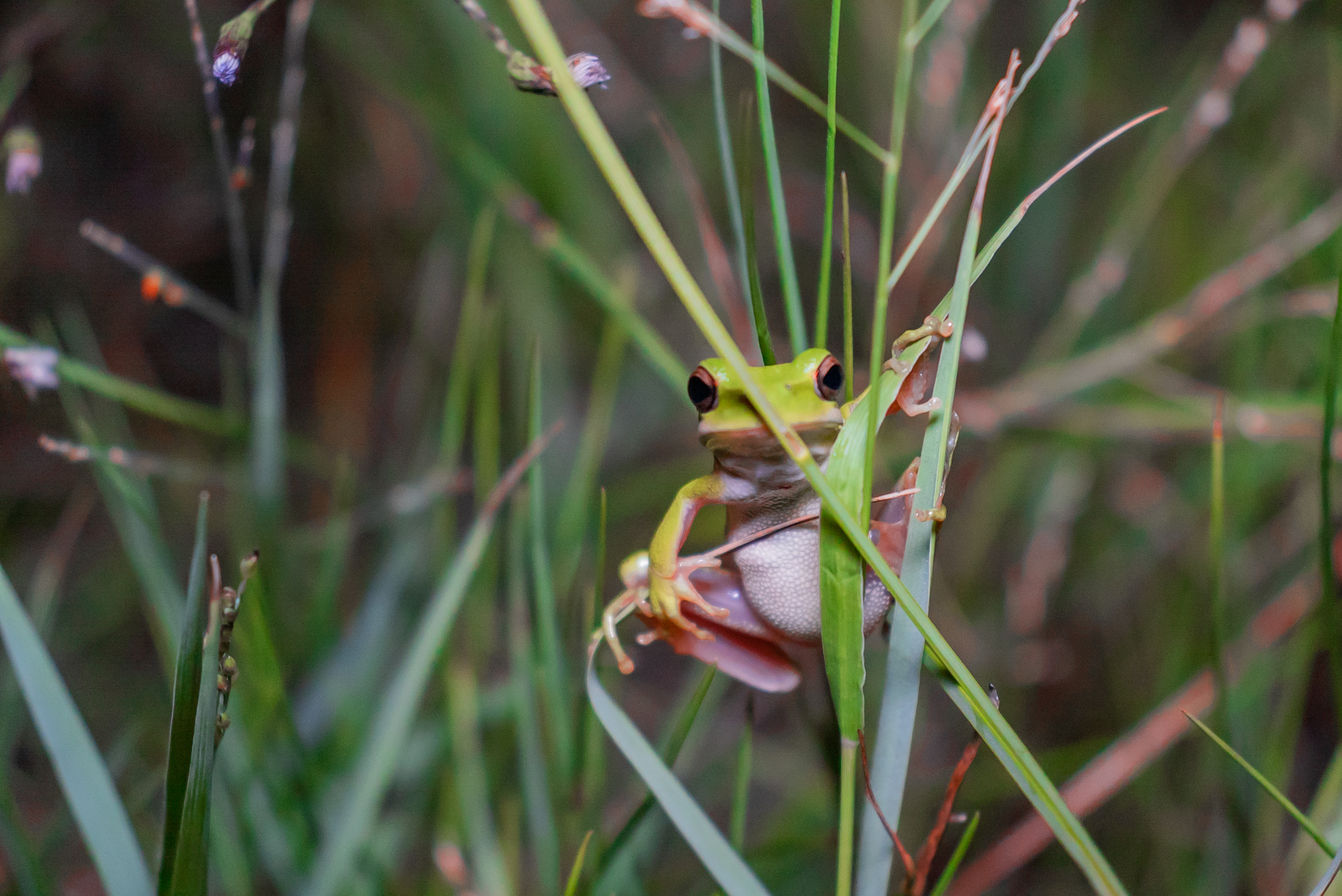Darwin's frog
(Rhinoderma darwinii)

Description
Darwin's frog (Rhinoderma darwinii), also called the southern Darwin's frog, is a rhinodermatid frog native to the forest streams of Chile and Argentina. It was first described by the French zoologist André Marie Constant Duméril and his assistant Gabriel Bibron in 1841, and is named after Charles Darwin, who had previously discovered it in Chile during his voyage on HMS Beagle. They are carnivores. The most striking feature of this frog is the tadpoles' development inside the vocal sac of the male. Darwin's frog is a small species with a snout–to–vent length of 2.2 to 3.1 cm (0.9 to 1.2 in). The snout is elongated into a fleshy proboscis which gives the head a triangular shape. The limbs are relatively long and slender. The front feet are not webbed, but some of the toes on the back feet usually are. The upperparts of this species are variably colored in brown or green. Some brown individuals may have weakly defined V-shaped markings on the back, have central upperparts that are distinctly lighter brown than the flanks, or have whitish front limbs. Females are typically brown and tend to stay on substrates that match this color. Males are far more variable and occur on a wider range of substrates; especially brooding males often are partially or completely green above. The throat is brownish and the remaining underparts are black with large white blotches in a pattern that is unique to each individual. Darwin's frog is found in Chile and Argentina. In Chile, its range extends from Concepción Province to Palena Province and in Argentina from Neuquén Province and Río Negro Province. It is found in glades and forested areas at altitudes of up to about 1,100 m (3,600 ft) above mean sea level. It is also found in bogs and near slow-moving streams. It is found in a variety of vegetation types and it appears that a mixture of grassland, mossy areas, coarse woody debris, and young trees and bushes in a mature native forest provides its optimum habitat requirements. Short vegetation increases the retention of water while decreasing the temperature of the soil and provides concealment from predators. The population is fragmented and this frog has poor dispersal ability.
Taxonomic tree:







